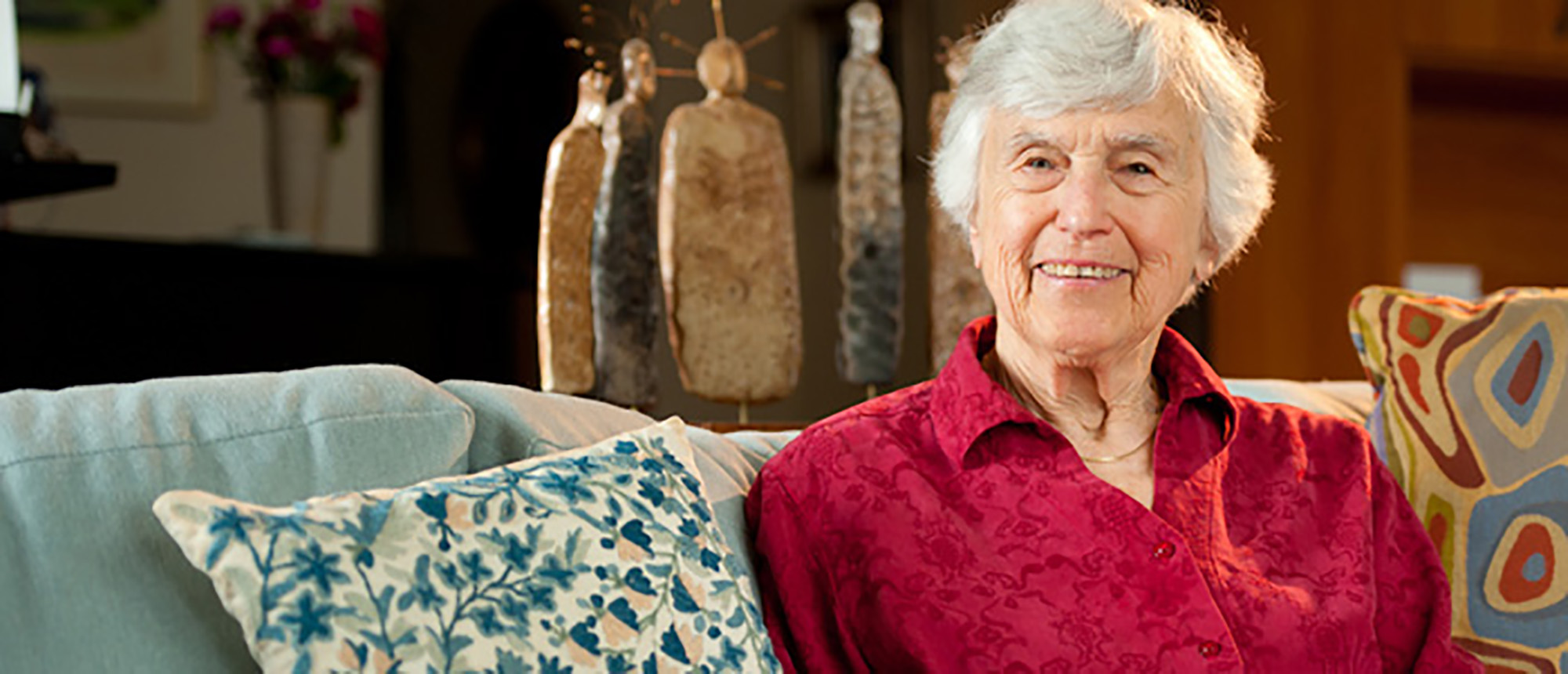
(Photography by Steve Hambuchen)
Muriel D. Lezak, PhB’47, AM’49, has spent her career trying to help humanize the young field of neuropsychology.
Not long after earning her PhD in clinical psychology, Muriel D. Lezak, PhB’47, AM’49, took a job at a VA hospital in Portland, Oregon. “This was in 1966, when the boys were just coming back from Vietnam,” she says. Focusing on brain function and its relation to behavior, Lezak became a neuropsychologist—even though, at the time, she had not yet heard of the term. Neuropsychology was a young field, and Lezak’s patients were soldiers whose brain injuries were, in some cases, only beginning to be understood. “I really threw myself into learning what I needed to know to understand the patients I was seeing,” she says. “I did rounds with the neurologists; I assisted with brain cutting.” When she tried tracking down a book to guide her and her interns as they conducted neuropsychological exams, she discovered there wasn’t one. So she wrote it, gathering a colossal expanse of research into a single volume covering disorders associated with brain dysfunction and injury. Neuropsychological Assessment (Oxford University Press) came out in 1976. Sometimes referred to simply as “Lezak,” it remains a staple on neuropsychologists’ bookshelves; a fifth edition was released in 2011. Now professor emerita at Oregon Health & Science University, Lezak has studied brain injury in athletes, munitions workers, and veterans. But devotion to patient care has kept her work as clinical as it is scholarly. In the late 1970s, after counseling the distressed wives of three brain-injured men, Lezak helped launch a support group for families whose relatives had suffered brain injuries. Several years ago she helped start a similar group for concussed high-school athletes. “In a funny way,” she says, “that’s how I really learned what happens with brain injury—listening to the families.” In June Lezak received a UChicago Alumni Association Professional Achievement Award. A mother of three, she was married to US attorney Sidney Lezak, PhB’46, JD’49, whom she calls “absolutely central” to her success.
A female scientist in postwar America
[My husband and I] were both going against the tide, and it was a very strong tide. The boys were home from the war, and we had our little home just like we were supposed to. He went off to work, and I was supposed to be home and take care of the children. There were not many women going back to school at that time. I never had a problem in class as a woman. I never felt out of place in classes that were mostly men. ... But there were very subtle social pressures. Most of the social pressures came from women, not least of whom was my mother, who in the six years it took me to earn my doctorate never once asked me how school was going. But she appeared for graduation. Then there was the friend who wondered if my children might become schizophrenic if I wasn’t home taking care of them. … That was an interesting time. Very few men had, or maybe still have, the comfortable sense of self to not feel threatened by a wife who is advancing. But my sweetie wore me and my career like a rose in his lapel.
Concussions in sports
It’s everywhere. You don’t even have to go to the literature anymore. I think sports need to change. Unfortunately, these contact sports are really dangerous. For the sake of our own entertainment, we’re asking a lot of these young people. I wish we still had as many baseball fans as we used to have, because it’s a much safer game.
Brain-injured high schoolers
I’ve been working with teenagers with traumatic brain injuries, mostly sports injuries, in a family group we developed where the youngsters and their parents come in and share their experiences. … Many of these young people have to drop out of school for six months or a full year. They have problems with visual focusing and double vision. And then there’s the confusion, the fatigue. Some have headaches so severe they have to stay in bed. ... Many of these youngsters are intensely into sports because they see it as a way to go to college without assuming these horrible debts. And then they get concussed, and they can’t go back to school for months, and their whole level of functioning is changed. They can’t play their sport anymore, and life as they have known it just sort of dissolves.
On neuropsychological assessment
When I got into neuropsychology, most of the few people who were examining patients, or who called themselves neuropsychologists, were using a single test battery developed by [neurosurgeon Ward] Halstead and [psychologist L. L.] Thurstone at Chicago to examine people with frontal injuries. ... And so everybody who was referred for a neuropsychological examination would get this particular battery [the Halstead-Reitan Neuropsychological Test Battery], which didn’t assess attention to any degree or various aspects of memory. It was kind of like a procrustean bed—you got the whole thing whether you needed it or not. It occurred to me that I wouldn’t care to go to a physician who had one set of tricks he applied to every patient, whether the complaint was a sore toe or a sore throat or a swollen belly. ... And it was administered by technicians, instead of the psychologist himself. ... The whole thing was not very patient oriented. It was not very humanistic. ... When Neuropsychological Assessment came out in 1976, most people were using this particular battery. And now, in the most recent surveys asking psychologists what tests they use, only 15 percent—maybe even fewer now—say they use the Halstead battery. I like to think that was my influence: humanizing and individualizing the neuropsychological assessment.
